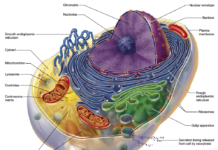The ‘Do-Everything’ Antioxidant
By Jim English
Alpha-lipoic Acid is a vitamin-like antioxidant used in Europe to restore liver health, treat diabetes-related neuropathy and radiation sickness, and confer protective benefits against oxidative processes involved in degenerative diseases and premature aging.
Alpha-lipoic acid (ALA), also called thioctic acid, is more potent than vitamins C and E, and CoQ10, and, according to Dr. Lester Packer, Professor of Molecular Biology at UC, Berkeley, may be the most important antioxidant ever discovered. “The therapeutic potential of alpha-lipoic acid is just beginning to be explored,” observed Packer, “but this compound holds great promise.”
The Only Antioxidant Both Water and Fat Soluble
Though lipoic acid is produced naturally in the body, researchers weren’t aware of the existence of this unique antioxidant until the 1930s. When first purified and isolated in the 1950s, ALA was thought to be a vitamin, but later was classified as an essential coenzyme when researchers discovered it was a vital component of the mitochondrial electron transport (energy) reactions that facilitate the metabolism of glucose into energy (ATP).
Alpha-lipoic acid is normally synthesized in exceedingly tiny amounts that are tightly bound to mitochondrial complexes. Researchers didn’t learn that alpha-lipoic acid is also a powerful biological antioxidant until 1988.
What really caught the researchers’ attention was the realization they had discovered the only antioxidant known to be both fat and water soluble. Furthermore, unlike any other antioxidant, alpha-lipoic acid is easily transported across cell membranes, enabling it to confer free radical protection both inside and outside cell structures.
Recycling Antioxidants
In recent years, Dr. Packer, a ground-breaking researcher who has studied vitamin E and exercise-induced free radical production, has focused on how lipoic acid and other antioxidants interact in a complex recycling process in the body. He first discovered several years ago how vitamin E is ‘recycled’ by vitamin C in the body.
Vitamin E is a potent antioxidant that works primarily to stabilize dangerous free radicals (lipid peroxyl radicals and lipid alkoxyl radicals) that form in fatty (lipid) tissues and membranes. In order to quench these reactive molecules, vitamin E first absorbs the excess unpaired electrons, but in so doing vitamin E becomes a free radical itself, though far less reactive or damaging than the original radicals. At this point, vitamin C now interacts with the free radical form of vitamin E, and by absorbing the excess electrons, converts it back to its natural form as stable vitamin E.
The newly regenerated vitamin E molecule can now go back to work, leaving behind a new free radical in the form of unstable vitamin C (a semiascorbyl radical). In the next stage of the recycling process the semiascorbyl radical is regenerated into vitamin C by a class of sulfur-containing compounds called thiols. Glutathione, the body’s primary protective antioxidant inside of cells and the most important member of the thiol group, is next in line to be recycled by another antioxidant coenzyme called NADPH. From here the cycle continues in a step-by-step process until all free radicals are quelled.
Glutathione
Up to this point we’ve seen how vitamins E, C and glutathione work together to deactivate and prevent free radicals from causing uncontrolled damage in the body. But at this stage we run into a limiting factor regarding availability of glutathione, which is an important free-radical deactivator offering protection against cataract formation, as well as immune enhancement, liver protection, cancer protection and heavy-metal detoxification.
Despite a detailed understanding of the antioxidant regeneration cycle, when Dr. Packer and other researchers tried to boost antioxidant levels, they ran into problems trying to find a way to increase cellular glutathione levels. Whereas vitamin E and vitamin C levels can be elevated by increasing intake directly from dietary or supplemental sources, cellular glutathione is only produced in the body. Glutathione, when taken orally, is broken down in the stomach before it reaches the bloodstream. What does end up being absorbed can raise serum levels, but the effect inside of cells is minimal.
ALA Is The Missing Link
“Alpha-lipoic acid proved to be the missing link,” Packer says. Not only is ALA a powerful antioxidant in its own right, but it also regenerates glutathione, giving cells a double dose of antioxidant protection. It is easily absorbed when taken orally, and once inside cells is quickly converted to its most potent form, dihydrolipoic acid, an even more potent free-radical neutralizer than ALA. Because both alpha-lipoic acid and dihydrolipoic acid are antioxidants, their combined actions give them greater antioxidant potency than any other natural antioxidant now known, according to Packer.
Another important property of alpha-lipoic acid is that, since it is both water and fat soluble, ALA can move into all parts of a cell to neutralize free radicals. Vitamin C (ascorbic acid), on the other hand, is soluble only in water; while vitamin E is soluble only in fat and sticks to the fatty parts of cells.
Packer remarked that alpha-lipoic acid also is important in cell metabolism for the production of energy inside the cell. Without alpha-lipoic acid, cells could not metabolize sugars for energy and would just shut down. This makes alpha-lipoic acid a metabolic antioxidant, able to draw on the cell’s own metabolism to magnify its protective effects and that of other antioxidants. Other researchers have reported that not only does ALA increase the efficiency of insulin, it also reduces insulin resistance, a major factor in diabetes, obesity and coronary disease.
Alpha-lipoic acid could also have much broader use in treating other diseases and may have general health benefits when taken as a daily supplement like other antioxidants. “Alpha-lipoic acid could have far-reaching consequences in the search for prevention and therapy of chronic degenerative diseases such as diabetes and cardiovascular disease,” says Dr. Packer. “And because it’s the only antioxidant that can easily get into the brain, it could be useful in preventing damage from a stroke,” he says.
ALA and Diabetes
Currently, lipoic acid is used in Europe to treat and prevent complications associated with diabetes, including neuropathy (painful peripheral nerve degeneration), cataracts and macular degeneration. Researchers have found that ALA can actually reverse neuropathy, aid in glucose utilization, and, in some cases, help diabetics reduce their reliance on insulin.
Researchers in Germany have reported that ALA administration resulted in a 50% increase in insulin-stimulated glucose disposal in patients with Type II diabetes (NIDDM). A Mayo Foundation study also found that nerve conduction improved, and after one month patients taking alpha-lipoic acid exhibited normal blood flow.
While the normal dosage of lipoic acid is 50 to 100 mg per day, in Germany ALA has been medically approved in higher dosages for treating adult-onset diabetes and diabetic complications. Doctors at the Rostock Sudstadt Clinic have reported that 600 mg of ALA per day significantly reduced symptoms of diabetic neuropathy.
Strokes and Heart Attack
Alpha-lipoic acid has been shown to protect tissues from damage associated with low oxygen supply that can occur following heart attack and stroke. Reperfusion, the reinstitution of blood flow to tissues previously deprived, causes excessive production of free radicals and is more destructive than the original trauma. What scientists have found is that animals pretreated with ALA have only 1/3 the death rate of those not treated with ALA. Similar studies have found a similar role for lipoic acid in preventing tissue damage and death after a heart attack.
ALA and HIV (AIDS)
Scientists have also found that lipoic acid can inhibit replication of HIV-1 and other viruses through its ability to bind directly to DNA. Dr. Packer and Chandan K.Sen, a researcher from Finland, have described how lipoic acid regulates aspects of the immune system, and in particular, the T-lymphocytes. They, along with other scientists, have reported how alpha-lipoic acid may help people with HIV.
ALA inhibits growth of HIV more effectively than NAC (N-Acetyl Cysteine). Dr. Packer found that in test tube experiments, alpha-lipoic acid “completely inhibited activation of a gene in the AIDS virus that allows it to reproduce.”
In a recent study, 12 people with AIDS were given ALA. Glutathione levels were increased by 100%, vitamin C levels by 90%, T4cells by 66%, and oxidative stress declined in 70% of the participants.
Memory and Brain Function
German researchers have found that ALA has a positive effect on long-term memory in aged mice, yet younger mice showed no such benefit. In interpreting their data the researchers suggested that “alpha-lipoic acid compensates age-related, long-term memory deficits rather than improving memory in general.”
Other researchers have found similar evidence that ALA protects brain tissues from oxidative damage. Scientists at the University of Rochester Medical Center have stated that “(the result) suggests a possible role of these endogenous compounds in the treatment of acute and chronic neurological disorders such as Parkinson’s and Huntington’s diseases.”
Cataracts
The interior of the eye is an aqueous environment, and fat-soluble antioxidants like vitamin E and beta-carotene don’t offer much protection. Given the dual water and fat soluble antioxidant properties of ALA, scientists are investigating the effects of alpha-lipoic on cataracts. Researchers have found that ALA is of potential therapeutic use in preventing cataracts and their complications, noting that biochemical changes in the lens showed major increases in levels of glutathione, ascorbate, vitamin E and certain protective enzymes. In another study involving animals given ALA, over 60 percent were protected from cataract formation, leading researchers to conclude that ALA had restored some of the protective functions of glutathione.
Arteriosclerosis
Free radicals created by the oxidation of low-density lipoproteins (LDL) accumulate in arterial cholesterol deposits associated with atherosclerosis. Vitamin E plays a critical role in protecting against this LDL oxidation. Since ALA and dihydrolipoic acid both support the regeneration cycle of vitamin E, it follows that higher concentrations of vitamin E in LDL can be achieved by vitamin E recycling with ALA.
“Just 10 years ago scientists had a simplistic view of free radicals and antioxidants,” Packer says. “Today knowledge of a global antioxidant network has emerged which is linked to the metabolic energy producing process – a new perspective that is leading to an explosion of basic research and therapeutic studies.”
References
1. Packer L, Witt EH, Tritschler EJ. Free Rad Biol and Med. 1995; 19-227-250
2. Packer L. Free Rad Biol. 1996.














[…] Lipoic Acid. The ‘do everything’ antioxidant […]
[…] https://nutritionreview.org/2013/04/lipoic-acid/ A review of 30 studies- […]